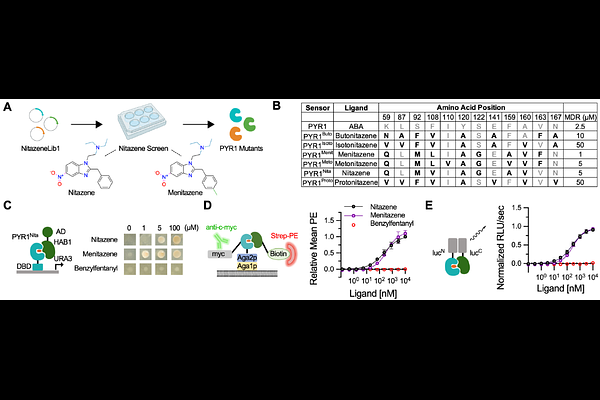Computational design of dynamic biosensors for emerging synthetic opioids

Computational design of dynamic biosensors for emerging synthetic opioids
Leonard, A. C.; Lenert-Mondou, C.; Chayer, R.; Swift, S.; Baumer, Z. T.; Delaney, R.; Friedman, A. J.; Robertson, N.; Seder, N.; Wells, J. T.; Whitmore, L.; Cutler, S.; Shirts, M. R.; Wheeldon, I.; Whitehead, T. A.
AbstractNitazenes are an emergent class of synthetic opioids that rival or exceed fentanyl in their potency. These compounds have been detected internationally in illicit drugs and are the cause of increasing numbers of hospitalizations and overdoses. New analogs are consistently released, making detection challenging - new ways of testing a wide range of nitazenes and their metabolic products are urgently needed. Here, we developed a computational protocol to redesign the plant abscisic acid receptor PYR1 to bind diverse nitazenes and maintain its dynamic transduction mechanism. The best design has a low nanomolar limit of detection in vitro against nitazene and menitazene. Deep mutational scanning yielded sensors able to recognize a range of clinically relevant nitazenes and the common metabolic byproduct in complex biological matrices with limited cross-specificity against unrelated opioids. Application of protein design tools on privileged receptors like PYR1 may yield general sensors for a wide range of applications in vitro and in vivo.